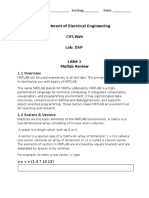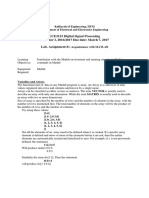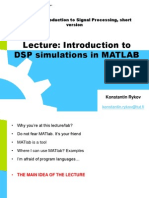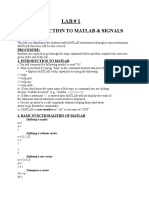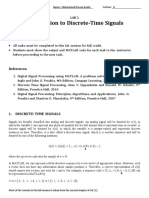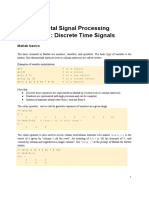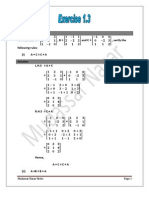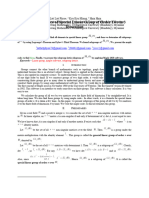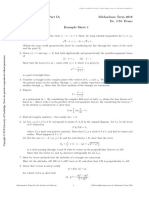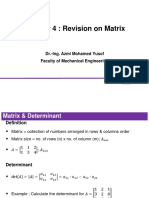0% found this document useful (0 votes)
37 views5 pagesDSP Lab 1
The purpose of this lab is to review the fundamentals of signals and systems with MATLAB, particularly:
Signal transformations (shifting, inversion, scaling)
Even and Odd parts of a signal
Convolution operator-the basic property of Linear Time Invariant (LTI) Systems
Uploaded by
Maryam RiazCopyright
© © All Rights Reserved
We take content rights seriously. If you suspect this is your content, claim it here.
Available Formats
Download as DOCX, PDF, TXT or read online on Scribd
0% found this document useful (0 votes)
37 views5 pagesDSP Lab 1
The purpose of this lab is to review the fundamentals of signals and systems with MATLAB, particularly:
Signal transformations (shifting, inversion, scaling)
Even and Odd parts of a signal
Convolution operator-the basic property of Linear Time Invariant (LTI) Systems
Uploaded by
Maryam RiazCopyright
© © All Rights Reserved
We take content rights seriously. If you suspect this is your content, claim it here.
Available Formats
Download as DOCX, PDF, TXT or read online on Scribd
/ 5










